Volcanoes are formed when the Earth’s crust cracks open so that magma and gas rise up from the Earth’s interior. From ancient times there has been speculations as to whether volcanoes were the way into hell or to the interior of the earth (ref Jules Verne and Snæfellsjökull).
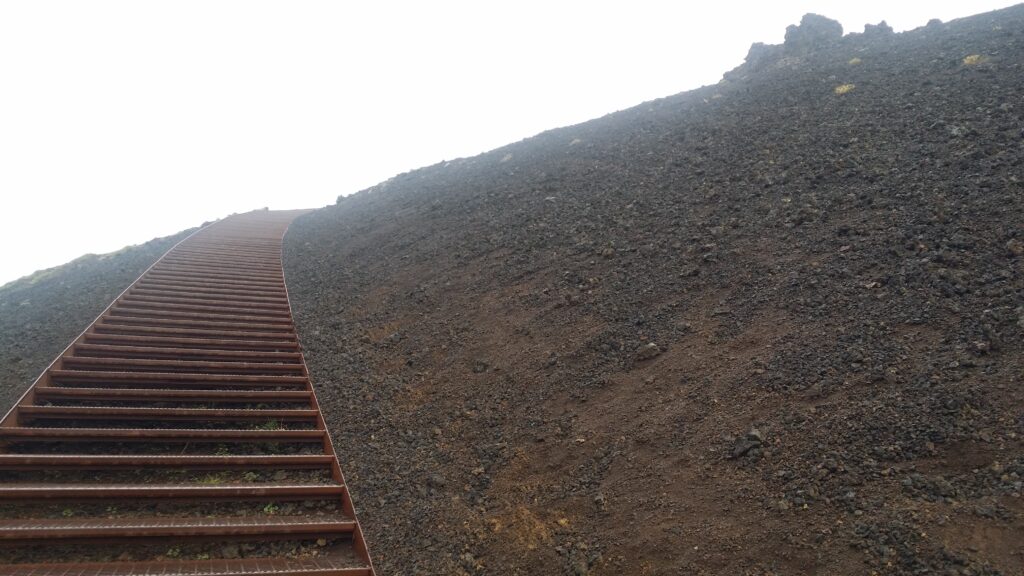
The word volcano comes from the Roman god of fire; Vulcanus. 25 km north of Sicily is a volcanic island with the same name (Vulcano). The ancient Romans thought this was the chimney of the God of Fire’s forge. When Volcano Island erupted (increased), it was because Vulcanus cleared the forge of various slag and ash. Earthquakes were explained in the same way; they happened because Vulcanus hit his anvil while making weapons for the God of War: Mars.
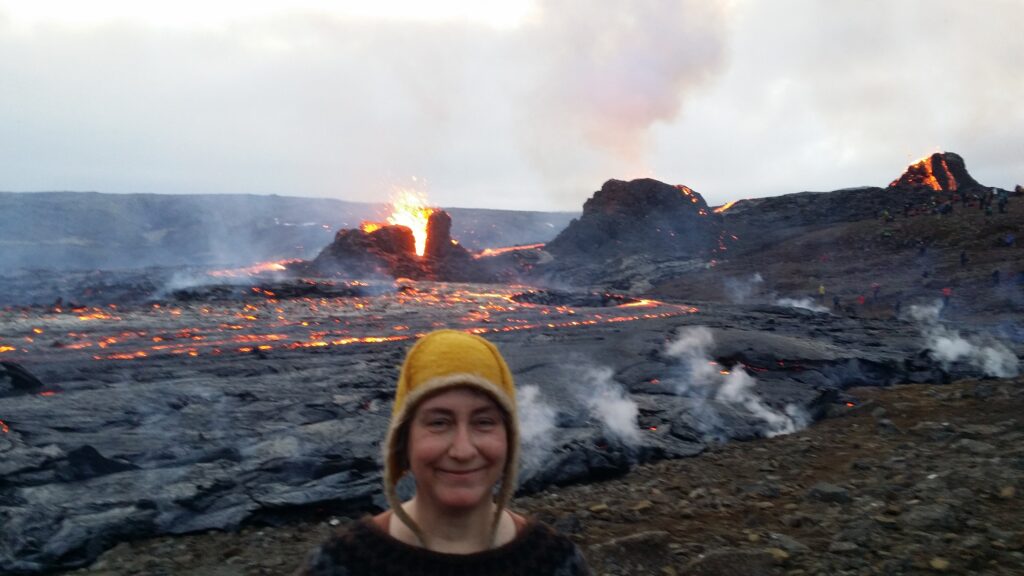
Counting volcanoes in Iceland quickly becomes a problem of definition. Where is the border between the one and the other volcano? Some people argue that Iceland has around 130 volcanoes. But scientists usually list only 30 volcanic systems.
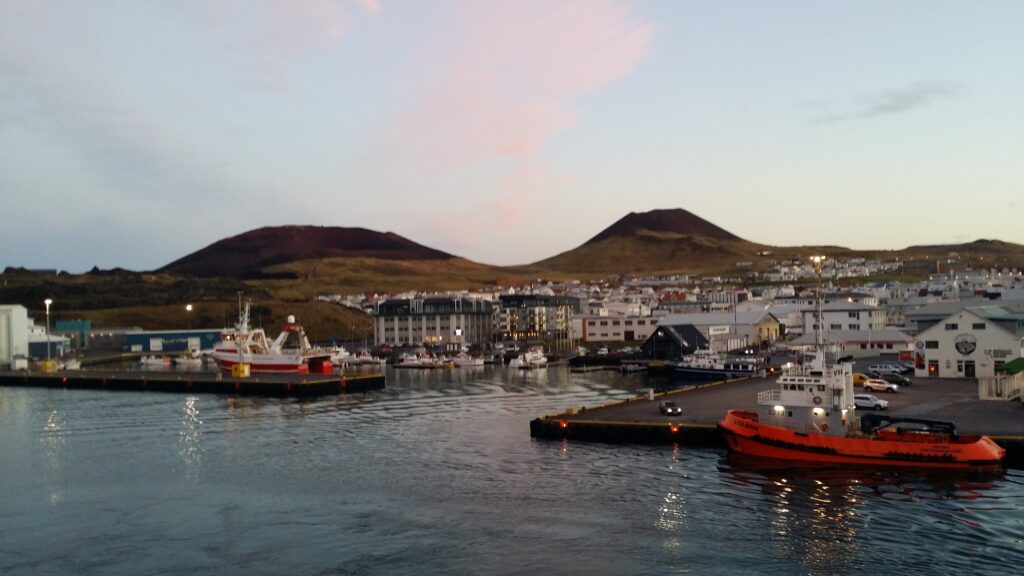
The shape of the volcano is determined by what comes out of it (thin, viscous, crammed or ash), and how fast it happens. In general, the volcanic eruptions become somewhat less explosive and more fluid in the spreading zones, i.e. where the continental plates move away from each other, such as in Iceland.
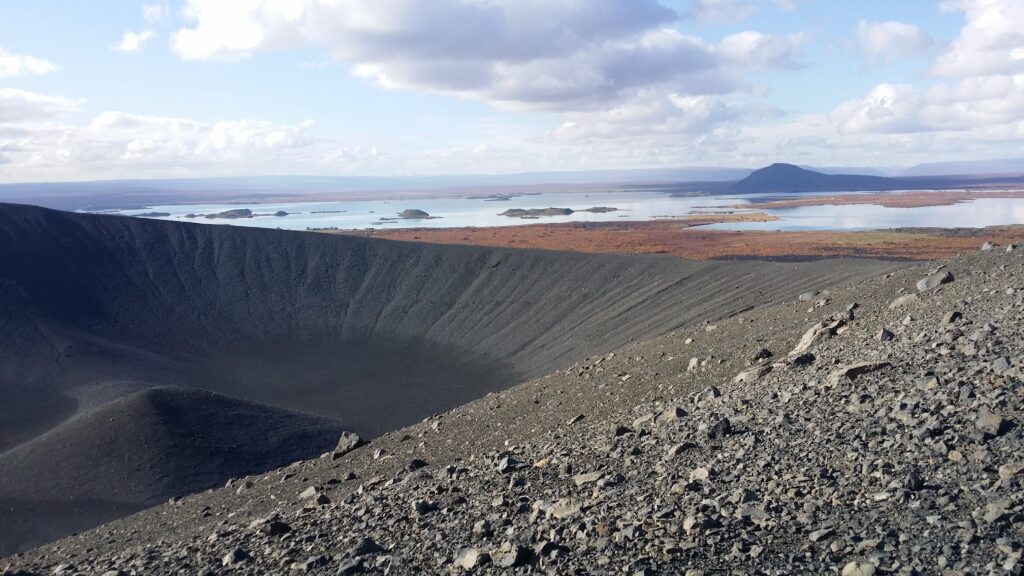
We had made a couple of attempts to Icelandic volcano baths, but it was not easy. First of all, water is needed for bathing, and most craters do not have volcanic lakes. When the volcano is built up of smaller rock particles, tuff and tephra, the water will drain away and the crater will remain dry. The second problem is access, the crater edges are often steep. But finally we found a good candidate – Kerið, which lies in the fissure zone between Reykjanes and Langjökull.
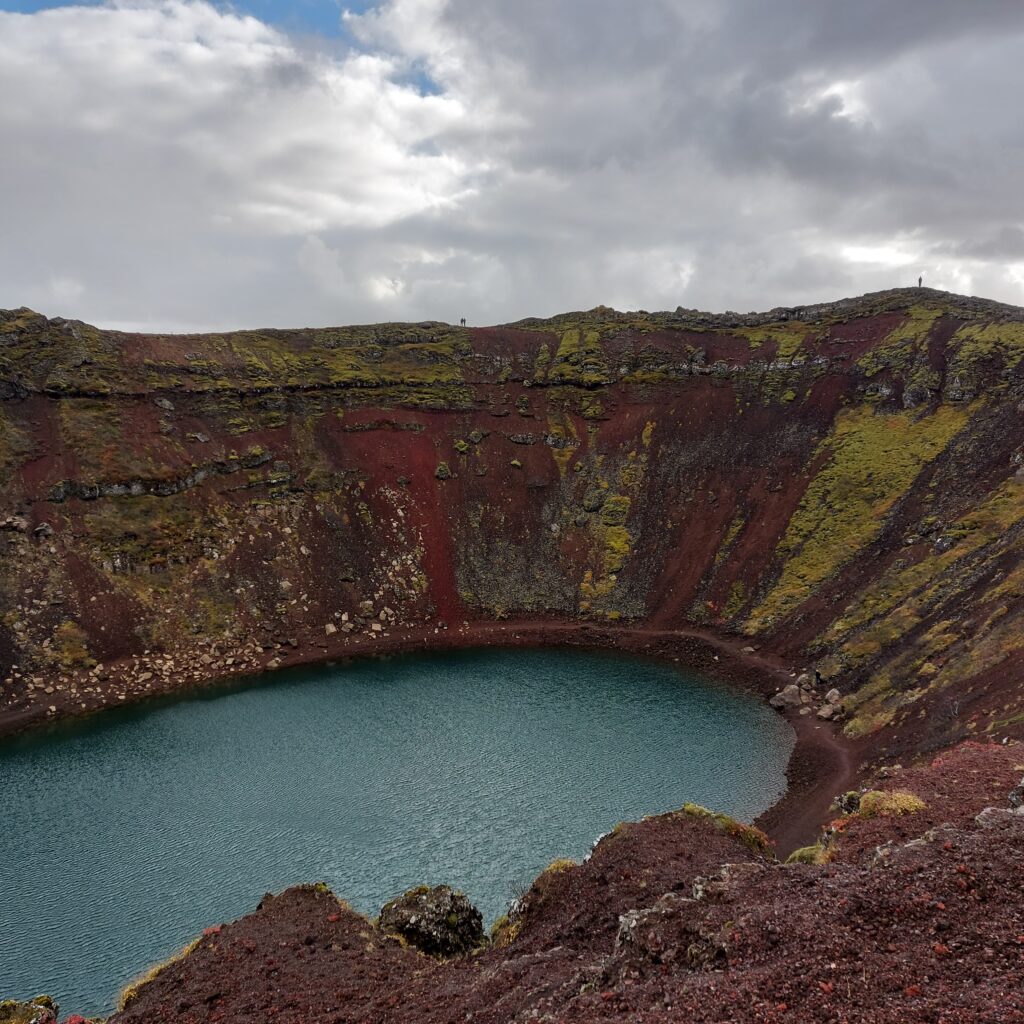
Kerið is a caldera crater, formed approximately 6,000 years ago. A caldera is a kind of a sinkhole that forms when the ‘roof’ of the magma chamber collapses after the magma chamber has been emptied. The water depth in Kerið varies between 7 and 14 metres, depending on the groundwater level in the surroundings. Nice place!
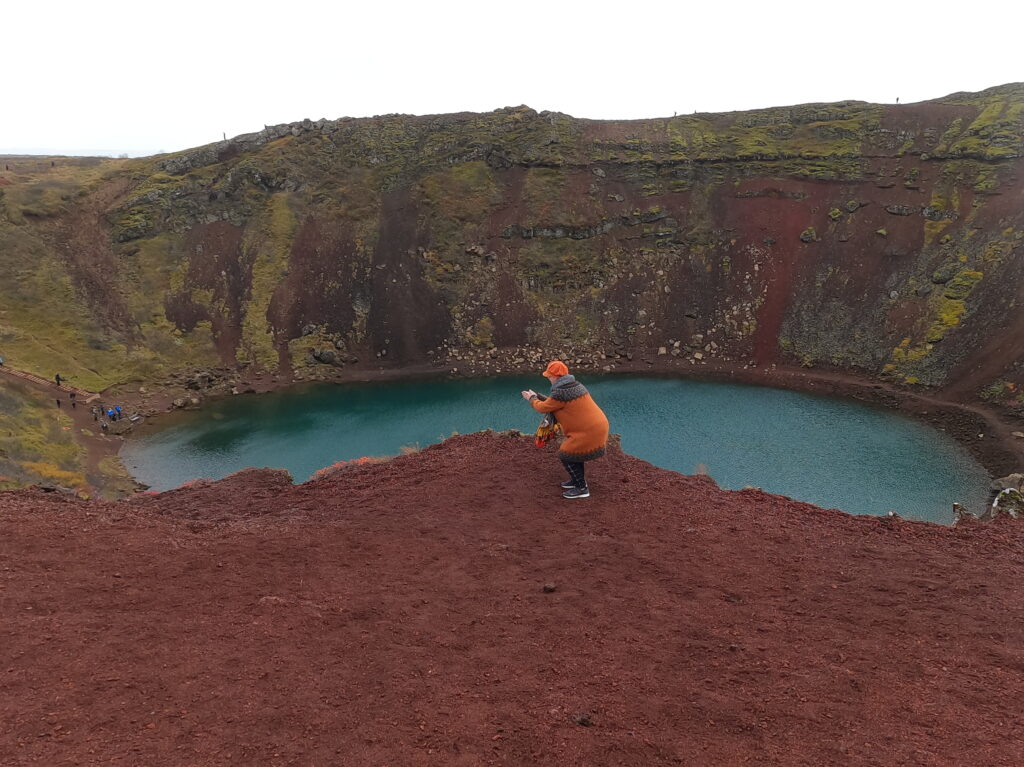
At Kerið, the landowners have made stairs down to the sea (there is a small fee to visit Kerið, but that’s absolutely ok in relation to the effort they have actually put in to facilitate the visit). There is a path along the crater rim, and a path down by the water, too. They have even installed a lifebuoy. So then it’s just a matter of getting started – right? The only small ‘but’ would have to be that at Kerið you can’t expect to be alone. But for us that was not a problem, so then we just jumped in. A splendid vulcano bath!
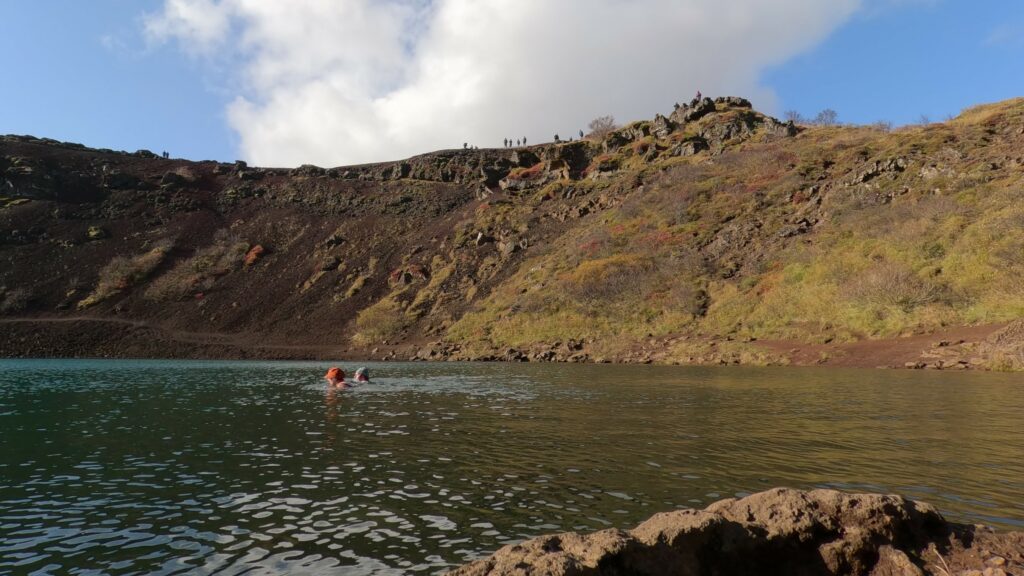
A volcano bath in Kerið is absolutely right.